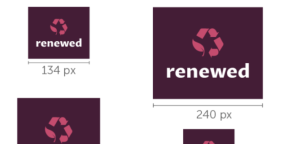Are you a fan of Chipotle and its delicious Mexican-inspired cuisine? If so, you may have noticed the distinctive logo that embodies the brand’s identity. The Chipotle logo features a vibrant chili pepper, which is a smoke-dried ripe jalapeño and a staple in Mexican cuisine. This logo speaks to the brand’s commitment to using fresh, authentic Mexican ingredients.
Chipotle’s logo has evolved over the years, starting with a simple black logotype on a white background in 1993. The original logo featured the brand’s name and a tagline written in uneven sentence letters. Today, the logo is much more colorful and visually appealing, with the iconic chili pepper taking center stage. In this article, we’ll take a closer look at the history of the Chipotle logo, its colors, font, and meaning. We’ll also explore how the logo has helped the brand establish itself as a go-to destination for fast-casual dining.
History of the Chipotle Logo
If you are a fan of Chipotle, you have probably seen their iconic logo. The logo has undergone some changes over the years, but it has always been recognizable. In this section, we will explore the history of the Chipotle logo.
Origins
The first Chipotle logo was introduced in 1993 when the company was founded. The logo featured a simple red chili pepper with the word “Chipotle” written in black underneath it. The logo was meant to represent the spicy and flavorful food that the restaurant served.
Evolution Over the Years
In 2009, Chipotle decided to update its logo to better represent the brand. The new logo featured a more stylized chili pepper with a green stem and a red body. The word “Chipotle” was written in bold, black letters underneath the pepper. This new logo was designed to reflect the fresh and natural ingredients that Chipotle uses in its food.
Since then, the logo has remained largely unchanged. However, Chipotle has made some minor tweaks to the design over the years. For example, in 2018, the company removed the word “Mexican Grill” from its logo, simplifying it even further.
Overall, the Chipotle logo has become an iconic symbol of the brand. It represents the spicy, fresh, and natural food that the restaurant serves. Whether you are a longtime fan or a first-time customer, you are sure to recognize the logo and all that it represents.
Design Elements of the Chipotle Logo
When it comes to branding, the logo is one of the most critical design elements. The Chipotle logo is a perfect example of a well-designed logo. It is simple yet effective, and it conveys the brand’s message in a clear and concise manner. In this section, we will take a closer look at the design elements that make up the Chipotle logo.
Color Scheme
The color scheme of the Chipotle logo is simple and straightforward. It features three colors: white, red, and brown. White represents hygiene, red signifies passion, and brown conveys healthy living. The use of these colors aligns with the brand’s message of providing fresh, healthy, and delicious food.
Typography
The typography of the Chipotle logo is another critical design element. The logo features the company name in bold, lowercase letters. The use of lowercase typography lends a casual and approachable feel, aligning with the brand’s fast-casual dining concept. The font used in the logo is a custom-designed font, which gives the logo a unique and recognizable look.
Symbolism
The symbolism of the Chipotle logo is perhaps the most critical design element. The logo features a chili pepper, which is the brand’s namesake. The chili pepper represents the brand’s commitment to using fresh and bold flavors in its food. The chili pepper is also a symbol of the brand’s commitment to sustainability and responsible sourcing.
In conclusion, the design elements of the Chipotle logo work together to create a simple yet effective logo that conveys the brand’s message in a clear and concise manner. The color scheme, typography, and symbolism all work together to create a logo that is memorable, recognizable, and effective.
Impact of the Chipotle Logo
When it comes to branding, the logo is one of the most important elements. A good logo can help a company establish brand recognition and shape customer perception. The Chipotle logo is a great example of how a well-designed logo can have a positive impact on a business.
Brand Recognition
The Chipotle logo has become synonymous with the brand itself. The bold, red letters are instantly recognizable and have helped to establish Chipotle as a major player in the fast-casual dining industry. The logo is simple yet effective, making it easy for customers to remember and identify.
One of the ways that Chipotle has leveraged its logo for brand recognition is by incorporating it into its restaurant design. The logo can be found on everything from the signage outside the restaurant to the packaging for the food. This creates a cohesive brand experience for customers and reinforces the association between the logo and the brand.
Customer Perception
The Chipotle logo has also helped to shape customer perception of the brand. The logo’s bold, red letters convey a sense of boldness and excitement, which aligns with Chipotle’s mission to provide fresh, flavorful food that is different from traditional fast food.
In addition to the logo itself, Chipotle’s branding has also focused on sustainability and ethical sourcing. This has helped to create a perception of Chipotle as a socially responsible company that cares about the environment and the welfare of its suppliers.
Overall, the impact of the Chipotle logo on the brand’s success cannot be overstated. By creating a recognizable and memorable logo that aligns with the brand’s mission and values, Chipotle has been able to establish itself as a major player in the fast-casual dining industry.
Changes and Controversies Related to the Chipotle Logo
If you’re a fan of Chipotle, you might have noticed that the logo of the popular fast-food chain has gone through a few changes over the years. Here’s a brief overview of the major redesigns and public reactions related to the Chipotle logo.
Major Redesigns
The first Chipotle logo was introduced in 1993 and featured a simple black logotype on a white background. The logo design included two legible inscriptions: the brand’s name and a tagline. The brand’s name, Chipotle, was written in uneven sentence letters, and below it was the tagline “Mexican Grill” in uppercase letters.
In 2009, Chipotle went through a major redesign that featured a new logo with a more modern look. The new logo was designed to represent the hot pepper, which the restaurant is named after. The new design featured a bold and simple “C” with a red pepper icon in the background.
In 2021, Chipotle unveiled another redesign, which was met with mixed reactions from the public. The new logo featured a more abstract and simplified version of the pepper icon, with a more muted color palette.
Public Reactions
Whenever a well-known brand like Chipotle changes its logo, it’s bound to stir up some controversy. The 2009 redesign was generally well-received by the public, with many people praising the new look as modern and sleek.
However, the 2021 redesign sparked some backlash from fans of the brand, who felt that the new logo was too simplistic and lacked the boldness of the previous design. Some people even went so far as to say that the new logo looked like it had been designed by a child.
Despite the mixed reactions, Chipotle has continued to use its new logo, and it remains a recognizable symbol of the brand. Whether you love it or hate it, the Chipotle logo is an important part of the restaurant’s identity and will likely continue to evolve in the years to come.
Comparative Analysis of the Chipotle Logo
When it comes to branding, a logo can make or break a company’s success. The Chipotle logo has become a recognizable symbol of the brand, but how does it compare to its competitors? Let’s take a closer look at the Chipotle logo and its influence on industry trends.
Comparison with Competitor Logos
One of Chipotle’s biggest competitors in the fast-casual dining industry is Qdoba. While both restaurants serve similar cuisine, their logos are quite different. The Qdoba logo features a stylized cactus and a bold, sans-serif font. In contrast, the Chipotle logo is more minimalist, with a simple pepper icon and a clean, modern font.
Another competitor, Moe’s Southwest Grill, also uses a bold, sans-serif font in its logo. However, the Moe’s logo is more playful and colorful than either the Chipotle or Qdoba logos. It features a cartoonish, smiling chili pepper and a bright green and orange color scheme.
Overall, the Chipotle logo stands out for its simplicity and modern design. It doesn’t rely on flashy colors or graphics to catch the eye, but instead lets the iconic pepper icon speak for itself.
Influence on Industry Trends
The Chipotle logo has had a significant influence on the fast-casual dining industry. In recent years, many restaurants have followed Chipotle’s lead and adopted a minimalist, modern aesthetic for their branding. This trend can be seen in the logos of restaurants like Sweetgreen, Cava, and Dig Inn.
In addition to its minimalist design, the Chipotle logo also reflects the company’s commitment to using fresh, high-quality ingredients. The pepper icon is a nod to the restaurant’s focus on fresh, flavorful spices and seasonings.
Overall, the Chipotle logo has set a high bar for branding in the fast-casual dining industry. Its minimalist design and emphasis on quality ingredients have influenced industry trends and helped establish Chipotle as a leader in the space.
Marietta Arnold is a branding and design enthusiast who draws inspiration from hobbies like hiking, photography, and art exploration. With a background in graphic design, she shares insights on branding strategies and logo design trends. Stay updated with Marietta’s work for the latest in branding and design.


